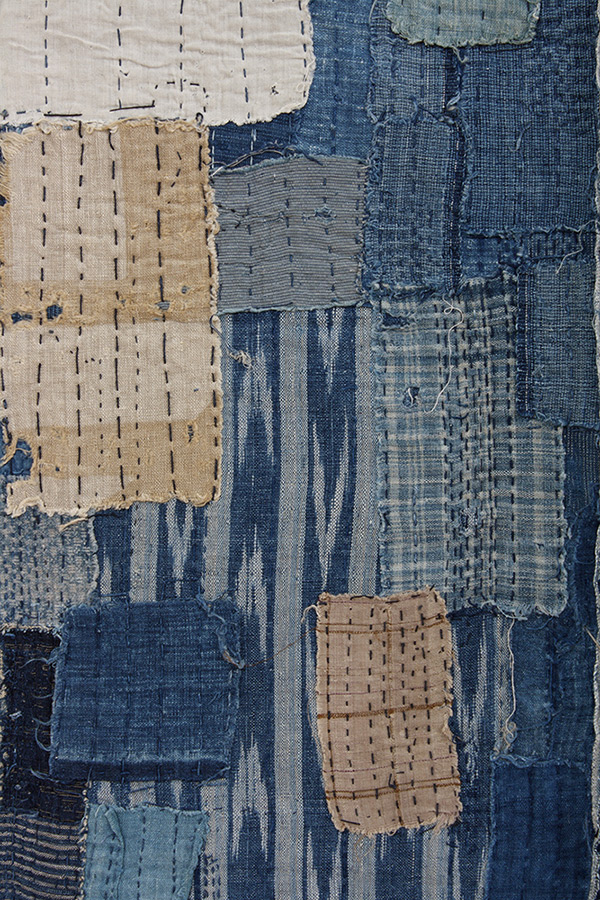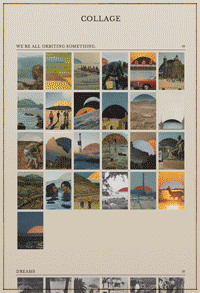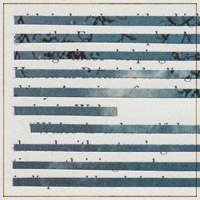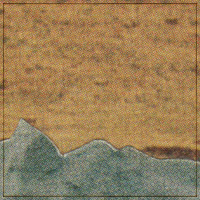Musical Eyes: Pressed And on Street Art and Fauvism



Traversing space in reverse, blinking in slow motion while moving at warped speed… the imagined side effects of Pressed And are infinite. The music that Mat Jones and Andrew Hamlet make together has a way of picking you up from your seat and propelling you forward without relent—it’s a textural journey like no other. And the experience doesn’t simply stop at sound; they had their debut EP Imbue Up developed into a loose film which recently premiered at the Ackland Art Museum Film Forum and online at Stadiums & Shrines.
One doesn’t come to create sonic textures like Pressed And working in isolation, so I’ve asked them to share with us some of their visual inspirations. The responses on paper seem incongruent, Mat’s lean toward graffiti and Andrew’s favor Fauvism, but when viewed side by side the 100 year gap is quickly closed.
You each have solo projects of your own, Mat as It is rain in my face. and Andrew as ArnHao. Can you tell us how your collaboration became Pressed And and what each of your contributions are to the sound?
AH: ArnHao is my collaboration with Arturo “Trizz” Holmes II; we are on hiatus but have unreleased material that we’d both like to eventually make public.
As for solo material, I make ambient guitar and soundscape pieces. ”Pinnacle Cow” more or less represents the sound of my solo material. I recorded that song after hiking along the Appalachian Trail where I encountered cattle standing in a meadow that overlooked a beautiful expanse of the Blue Ridge Mountains.
Mat and I met through a mutual friend, Tripp Gobble (who would later go on to co-found Denmark Records). Tripp and I ran UNC’s student-run record label Vinyl Records, and Mat performed in one of our annual showcases and recorded an EP for our monthly VR Presents series.
About a year after first meeting, ArnHao was scheduled to perform at a Denmark Records showcase but ended up having to cancel. Tripp asked Mat, as It is rain in my face., to substitute for ArnHao. Mat and I chatted after his performance and decided to start working on material together. About two months later we had our first song, “Etching,” which is featured on Imbue Up.
MJ: We don’t really have set roles in constructing the songs. If either of us come up with something interesting, no matter what it is, then we keep it. Generally, I do most of the vocal samples and Andrew does most of the ambience.
Mat, in addition to being a musician you also work as a visual artist, utilizing basic elements of form and color to create compositions you describe as purely aesthetic. How interwoven is your visual art with your music? Do they build upon the same core concepts?
MJ: I think music and art come from the same place for sure. When I make stuff I typically concentrate on the technical aspect of it, no matter what it is I’m making. It’s only at the end that I can look back and figure out what anything means.
Both your and Oliver Vernon’s paintings have underlying elements that seem to derive from street art. What about graffiti are you drawn to? What other artists/types of art do you look to for inspiration?
MJ: I really enjoy the idea of someone painting on a wall that doesn’t belong to them. Even though it has it’s negatives (like you just ruined someone else’s property and somebody’s going to have to clean up after you) I think it’s a beautiful representation of something essentially human. Folks have been painting on walls for thousands of years and it’s cool that we still find it significant. I guess most of the artists I like are associated with street art and graffiti, because with that type of art there’s such an emphasis on interesting colors and compositions. That’s what I primarily enjoy about Oliver Vernon and Augustine Kofie…and Escif as well, though his colors and composition are interesting in a more subtle way. Escif is also very clever and funny, which is something everybody loves.
Rich saturated color and an emphasis on the inherent qualities of painting–brush stroke, the build up of pigment, etc., were a main focus of Derian and Matisse during their Fauvist years. Andrew, can you speak to the aesthetic parallels of how you approach sound as an art medium and the art you enjoy?
AH: Whereas extreme displays of color characterized the Fauvist aesthetic, sonic texture and richness of harmony inform my approach to sound. Right around the time I first started to understand the guitar, I took an interest in jazz. It is funny because jazz players describe variations in harmony as “color,” and this is most definitely where I developed my sense for complex chords and voicings.
But unlike jazz and its improvisation, my contributions are simple and refined–like the Fauvists. I believe “color” can be enough to imbue a piece with a certain emotion.
With your recent ep, Imbue Up, you had each track visualized by different video artists and provided no direction as to how it should look. How important is it for Pressed And to have visual art accompany the music and why was it decided to not direct the artists?
MJ: I feel like having something visual just makes it that much more of an experience for people to take in. I’ve always thought that music and art are about connecting with other people, so I’d guess we’d like to achieve that through whatever means possible. As to not directing the videographers, I think it just went along with the music…when Andrew and I make music we don’t try to direct anything a certain way, we just feel around in the dark until we find something that’s satisfying. I feel like if you’re not imposing some kind of direction on what you’re making then you’re able to find something more genuine, which is hopefully what got reflected in the videos that everyone made.
AH: There was a trust that the music would direct the video artists to whatever it was that would inspire them to create. In that way, it was more of an experiment in how the artists would perceive their respective songs and how their perceptions would collectively come together to form a whole. I am really impressed with some of the themes that emerged as a result. It appears the video artists picked up on water, outer space, and sexual energy, among others. Additionally, by not directing the video artists, we, in effect, allowed the creation of the movie to become a performative art. I think the work ended in a beautiful statement on our current collective sense of human agency, or lack thereof. For myself as I imagine for many others lately, I have felt very much out of control of the many variables in my life, but as the creation of Imbue Up suggests, perhaps there is an underlying order to this chaos.
Thank you Mat. Thank you Andrew.
Their debut EP Imbue Up, is out now on Crash Symbols. You can stream/purchase the limited edition cassette here.
Images from top down.
- Oliver Vernon: Spitfire – 2009
- Oliver Vernon: Crossfire #3 – 2008
- Oliver Vernon: Promised Land – 2007
- Mat Jones: Okay With It - 2011
- Mat Jones: This Is How I Will Speak To You - 2011
- André Derain: Charing Cross Bridge – 1905
- Henri Matisse: La Moulade – 1905
- André Derain: Paysage à L’Estaque – 1906
- Henri Matisse: La Moulade (Collioure in the Summer) – 1905

Musical Eyes: Gem Club on Japanese Boro










Few things put me at peace the way Gem Club does. Like staring at the moon, with stars dimming out of focus, clouds at all sides, churning with a rain that never falls—it’s a melancholic kind of contemplation, yet ever-assuring, as I know that this pure, unrelenting beauty lies just out of reach, just one squint away.
Gem Club, comprised of Christopher Barnes and Kristen Drymala, has soundtracked many a late night while I’ve worked on my own art, often making me wonder what types of visual influences might exist behind the sound fueling mine. Christopher has been kind enough to open up his and his partner Jared’s personal collection of textile art, as well as, chat for a few on his path to music and his admiration for Japanese boro.
I know very little about Japanese boro, can you tell us a little about what it is and it’s history?
In rural Japan back in the 19th and into the early 20th century cotton was very scarce. Most early Japanese garments were made of hemp, but for northern Japan these clothes had to be thickly woven, were often uncomfortable, and did not retain warmth very well. So when cotton was introduced to Japan, it was seen as a luxury item for rural poor. Cotton was brought from warmer districts such as Osaka and other cities by ships, where people bought fragments instead of a cloth roll as it was less expensive. It was common for these textiles to be passed down through generations, where they would be patched and mended to reinforce them for the next user. It’s sort of an unintended art form, which highlights preservation and the importance of reuse and recycling.
You hold degrees in fields outside of music. For you, was music an unintended art form? What paths lead you to form Gem Club?
In some ways yes. For a long time there was no real path. Well, I mean I was making choices that would ensure that there would be none. I had graduated from university…I’m not quite sure how that was pulled off. I was very much a mess. Somewhere in there I decided that I wanted to go back to school for music but I was having a difficult time keeping sober and going to school. School wasn’t a joke either, I think sometimes people think that going to study music means you’re playing the guitar all day. That’s part of it, but there’s a lot more going on – composition, ear training, theory. I had written songs before I went to school, and they were very personal and I never played them for anyone. They were also very bad. School forced me to have to perform in front of an audience, something I don’t think I would have otherwise ever attempted. In that way, I feel like had I not gone to school much of what would later happen with Gem Club would never have surfaced.
Boro are deceptively simple, made of only cotton, indigo and thread, somewhat mirroring the elements you use to compose your music–piano, voice and strings. Both achieve an incredible amount of depth from so few raw materials. Can you speak to this minimalist philosophy that seems to underline both the art you collect and the music you create?
This is an interesting question and something that I’ve never really thought of before. I feel like people would notice these flaws, the holes that needed to be repaired and they would cover it up, they would mend it. I don’t really think they would think twice about it, I mean which piece would go where. You saw that your jacket had torn and you fixed it because you didn’t want the hole to get bigger or you didn’t want to be cold or whatever. I don’t think there was a lot of concern for aesthetics. We admire these pieces for the unintended end result–the insane array of patches and stitching–but to the Japanese, the heavily patched side would typically be hidden.
I think with my work I tend to obsess about the missing pieces, often to my detriment. It makes me nuts. I remember working on Lands for weeks trying to find the right textures for the horn and the cello to fit underneath the chorus. There is a lot to learn from boro–not only about the history of the textile and the people who were using them, but also in it’s creation. Instead of fussing over these holes, worrying what piece should go where, or waiting around for that perfect piece to surface, the garments were just patched and with time you could eventually step away from these objects and see this fantastic end result.
Thank you Christopher.
You can explore more of Gem Club’s music on their website and stream both the LP, Breakers and EP, Acid and Everything here. I highly recommend you get a copy of Breakers (on white vinyl) while it lasts.
All images above are courtesy of the collection of Christopher Barnes and Jared Graves. I want to extend a very special thank you to Jared for photographing all of these for us.

Takahiro Kimura’s animated collage reflects a fragmented landscape





Wide-eyed and hollow, we enter this world, with no choice but to move forward and emerge from the dark. Reflected onto us is a fragmented landscape, shimmering with moments of hope while simultaneously emitting apprehension. We unknowingly let it shift our appearance. At our core were are unchanged. Our eyes, the windows within, remain ever open, for growth is a difficult process to see.
View more of Takahiro Kimura‘s Broken Faces and observe as we go from Born to Bone.
Also, try muting the above video and watching it re-scored with Julianna Barwick’s Prizewinning.

My…MY… new generation animations of Lei Lei





Few minds are granted passage into other worlds, allowed to look around, feel what the walls are made of, hear the white noise that surrounds. Fewer still are those able to soak in every element, let it settle and bring their travels back home, to reconstruct them and share with all attentive ears their adventurous tales. And, then there are times on such journeys where you may find yourself naked, like Lei Lei did.

Musical Eyes: Teen Daze on A Silent Planet

Over a continuous stream of emotive dance music, Teen Daze has evoked just about every contemplative landscape Earth has to offer—oceans, sunsets, forests, and so on. His latest effort however, leaves this world behind for a day-dreamt voyage through the pages of CS Lewis‘ celestial “Out Of The Silent Planet.” Upon first listen we begin acclimating ourselves with our new found surroundings, wondering what secrets may be hidden beneath the surface. Enlivened by curiosity we begin the exploration, him along side, scoring our thoughts as if hovering in the very atmosphere. He’s been here before and knows the way.
Anticipating that there must be more to the tale than sound and word, I’ve asked Jamison to share with us some of the more visual influences that helped shape the album. Below he describes how the novel, it’s many cover designs, the work of Scott Hansen, Carl Sagan and Candy Claws have effected the ep.
A Silent Planet
As I read “Out Of The Silent Planet,” the first in CS Lewis’ “Space Trilogy,” I was incredibly moved by the way that Lewis could create such vivid landscapes with his words. It was easy to feel claustrophobic and tense as the main character sped through space in his coffin-like ship, and it was easy to feel disoriented and in wonder as the main character first stepped onto the new planet. Throughout my reading, I had a visual playing in my head. As well as having that visual creation happening, I also heard what the soundtrack to those visions might sound like, and that’s what eventually became “A Silent Planet”. The music on the record is a companion to the visuals that I saw in my mind.
This isn’t the first time that visuals have played a big role in the creation of my music. Listed below are several different artists/pieces of art that have had a significant influence on the creation of A Silent Planet, as well as all my other works as Teen Daze:





Out Of The Silent Planet Novel Covers
Obviously, “A Silent Planet” draws a lot of influence from its novel counterpart. But the physical novel itself even served as an influence; the many pressings of this novel mean that there are many different visual interpretations of the story. Each one tells a different piece of the story, and each presents a different idea visually. Just as I had my own visual experience with the novel, it’s so interesting to see how each one of the illustrators has their own idea of how to represent the novel.
Scott Hansen (aka ISO50)
One of the greatest inspirations for me, both musically and visually, has been the work of Scott Hansen, who creates music under the name Tycho, and designs under the moniker, ISO50. Scott’s works evoke so much emotion and feeling. So much of my work as Teen Daze has been created as “vibe music”, or in other words, it’s been created to have that same characteristic that Scott’s work has. I want Teen Daze records to draw out those same emotions and feelings that I experience when I listen to Tycho, or when I see some of his design work.
Cosmos
I only discovered Carl Sagan this past year, and I dove head first into Cosmos. The man’s passion and love for all things “unexplainable” is so inspiring. The way that he was able to take something very intellectual and formal, and present it in a very relational way was such a wonderful gift. His passion for Science spilled over and became a passion for anyone that came to experience him, whether personally or through this series. Visually, the series itself is so lush and pleasing to the eye. The soundtrack uses electronic music in a way that is more comparable to classical music, rather than dance music, which is a trait that I’ve always strived towards.
Candy Claws In Dreamland
A huge musical influence on the record is the works of Candy Claws. Dreamland is a series of videos that feature the band exploring some of the beautiful nature scenes in their home state of Colorado, as well as showcasing their ability to create other-worldly sounds through the series’ soundtrack. When I first approached Ryan, one of the principle members of Candy Claws, about possibly designing the album art, I was shocked when he said that he was a huge fan of the books when he was growing up. A week or so later, and he sent me his first draft, which ended up being the cover! His design work has this modern, 50′s look to it, and it suited the feeling of the album so well.
Images from top to bottom:
- Out Of The Silent Planet, Publisher: Avon Books 1949
- Out Of The Silent Planet, Publisher: Avon T127 1949
- Out Of The Silent Planet, Publisher: Pan Books 1962
- Out Of The Silent Planet, Publisher: Mac Millan 1970
- Out Of The Silent Planet, Publisher: Scribner Paperback Fiction 1986
- ISO50 – Tycho: Past is Prologue
- ISO50 – Tycho: Dive
A Silent Planet is available (September 13th) digitally on bandcamp and physically at the Lefse Records shop on both CD & cassette.

Think or Smile | Nathaniel Whitcomb © 2011















